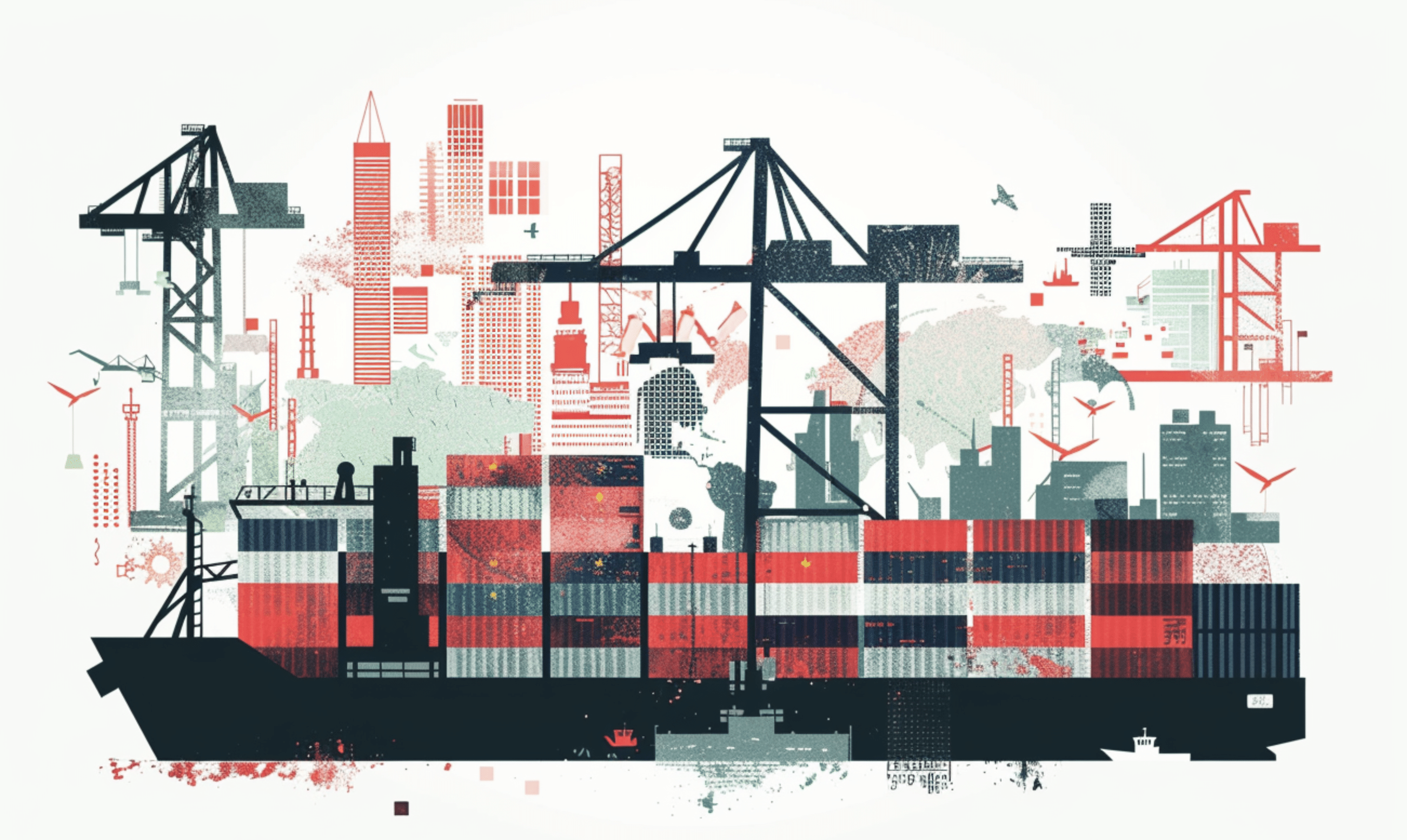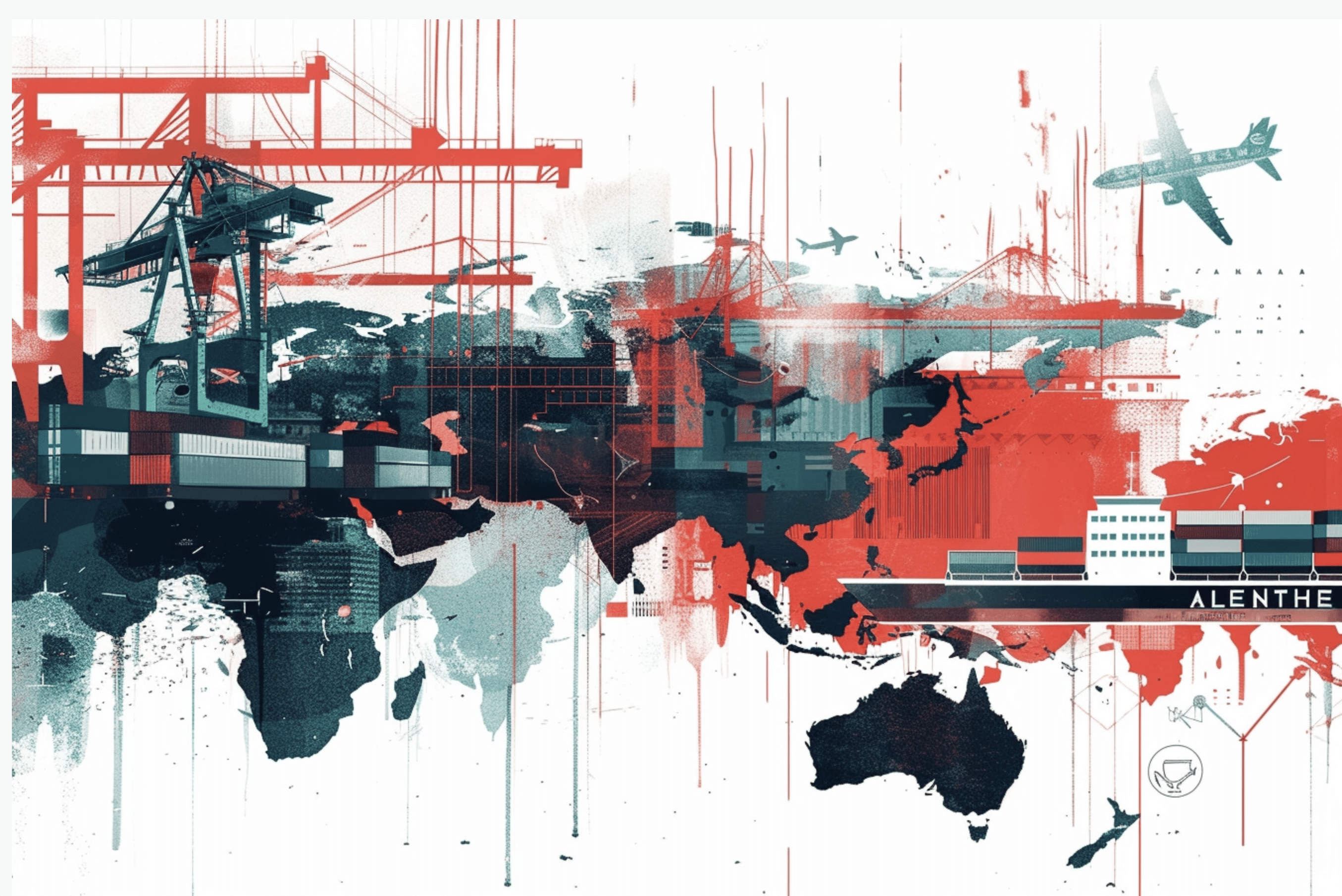Geopolitics and Globalisation, the New Paradigm: More trade, less welfare?
With many new restrictive measures in place one would have expected trade to fall. However, the most one can say is that globalisation has turned into slowbalisation.

One important driver of the post-World War II recovery was the creation of an open multilateral trading system in which trade was kept separate from geopolitics. No longer. Geopolitics is returning and it is driving increasingly trade policy. The US started this trend with the large tariffs on Chinese products imposed by President Trump starting in 2018. China reciprocated of course with its own tariffs on imports from the US. In the wake of Russia’s full-scale invasion of Ukraine in 2022, the EU and many other (Western) countries imposed sweeping sanctions that effectively ban trade with Russia in many goods.
With all these restrictive measures in place one would have expected trade to fall. However, the most one can say is that globalisation has turned into slowbalisation. Trade as a share of GDP reached a new record in 2022 and the supply chain problems of the last years provide another indicator that trade was robust. Delays and soaring prices for container shipments in 2022 were due to the fact that more products were being shipped across the oceans than anticipated. Firms would not have been complaining about the difficulties to source supplies from abroad if trade barriers had stopped trade.
One is thus tempted to argue that, given this resilience of trade, the economic cost of all the geopolitical trade barriers must have been minor. However, this conclusion would be wrong. The economic cost of trade barriers can be high even if they do not impact trade, indeed even if they lead to an increase in trade volumes.
That a tariff can lead to more trade appears paradoxical at first sight. But this possibility becomes obvious once one considers the kind of trade barriers imposed recently. Almost all of them, starting with the Trump tariffs were discriminatory, i.e. the tariffs of prohibition of trade were directed only at China, leaving imports from other countries free of tariffs.
To give a concrete example: When the US imposed high tariff on imports from China import from Vietnam soared. Many consumer products are now assembled in Vietnam, or other Southeast Asian countries, and then shipped to the US. The additional exports from these countries required intermediate inputs from China. The volume of trade thus increased because the US imports of consumer goods from Asia are the same as before, but Chines exports of intermediate input to its Asian neighbours increased by almost the same amount. Something similar is happening in Mexico, that has now supplanted China as the main source of US imports. But its imports from China have increased also by almost 40 % since the imposition of the Trump tariffs.
Another example of how discriminatory trade barriers can increase trade is the market for electrical vehicles (EVs). The US market is practically closed to Chinese EVs because the US tariffs of close to 30 % and US rules that EVs that contain critical minerals source from ‘entities of concern’ are not eligible for the subsidies for EV purchases under the Inflation Reduction Act (IRA). By contrast, European EVs face a tariff of only 2.5 % and, when leased, are eligible for the $7 500 IRA subsidy. Chinese exports of EVs have thus concentrated on the European market whereas European car makers do a good business on the US market.
The EU is experiencing something similar as its exports to Turkey and Central Asian countries have soared, alongside the exports of these countries to Russia.
These roundabout ways to circumvent sanctions or US discriminatory tariffs increase costs, both in production and because more shipping activity is needed to first bring the intermediate goods to the ‘bystander’ country and then to the US. One should thus avoid celebrating the resilience of global trade in this age of geopolitical trade policy.
Sanctions and discriminatory tariffs can thus both increase trade and reduce welfare. The qualification ‘discriminatory’ for tariffs is key here. If the US had increased tariffs on imports from all countries in 2018, global trade would surely have declined. This is why a key pillar of the WTO, and even the GATT earlier, is (or realistically was?) the principle of the most favoured nation, i.e. that countries should not discriminate among trade partners and extend any trade liberalisation measure to all. The broad-based trade liberalisation under the GATT and later the WTO not only increased trade volumes, but also welfare because it was non-discriminatory. By contrast, today’s geopolitically inspired tariffs and other trade barriers are almost always discriminatory because they are directed against another country that is perceived as hostile or potentially a threat.
Discriminatory trade restrictions are thus different in that they can increase the volume of trade while imposing costs. But who bears the cost? Here economics (and common sense) suggest a clear answer: those engaged in discriminatory trade policy bear the cost while the rest of the world is likely to gain. The US (and China) lose out from their tariff war, but Vietnam and Mexico gain from becoming intermediaries between the US and China. The EU has to bear the cost of its sanctions against Russia, while Turkey and Central Asian countries benefit.
This distribution of the costs and benefits also explains why there has been so little international opposition to Trump’s tariffs. Why should the EU, Mexico or Vietnam complain about a US policy that is a boon to their own industry? Pressure from the international community is thus unlikely to stop this dominance of geopolitics over trade policy. The trend is likely to continue until political leaders in large trade powers like the US, China and the EU realise that the cos t of following perceived geopolitical imperatives increases with every additional restriction. The EU, as the most open among the major 3 regions (and the one with the least geopolitical ambition), is likely to realise this first. But the stakes are much higher for the US and China. The US as the most active geopolitical trading power is likely to suffer much more before it changes course.
A previous version of this column was published by Project Syndicate

The economic cost of trade barriers can be high even if they do not impact trade, indeed even if they lead to an increase in trade volumes
IEP@BU does not express opinions of its own. The opinions expressed in this publication are those of the authors. Any errors or omissions are the responsibility of the authors.
